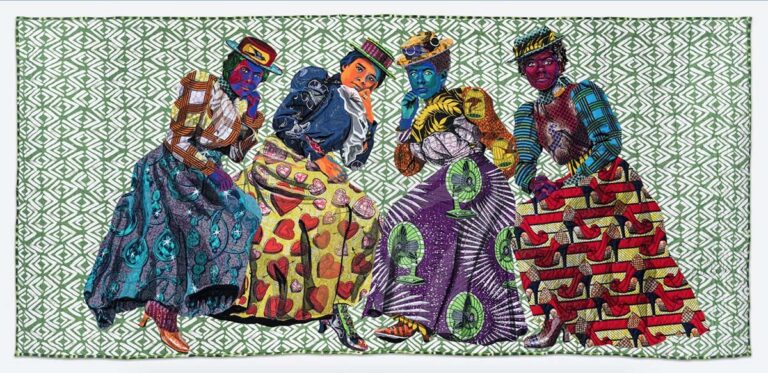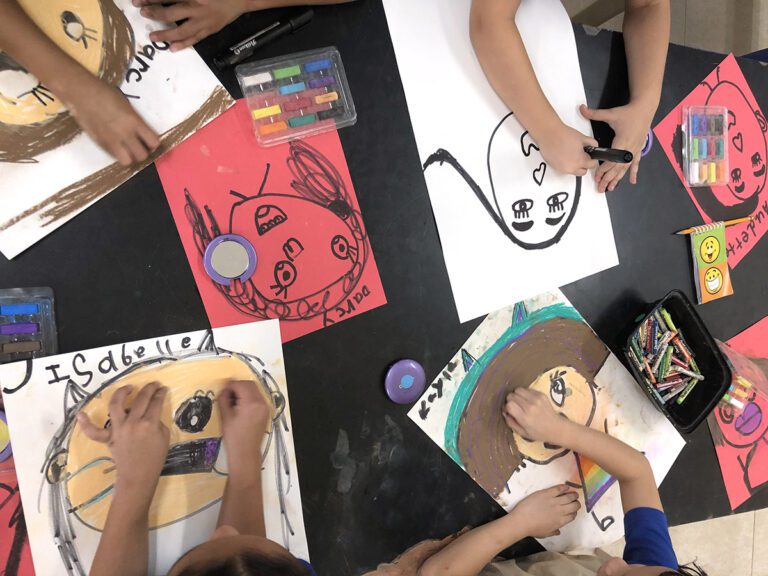If your students blog about their art as mine currently do, you understand the rich reflection that blogging can produce. When students reflect on both their finished pieces and the processes they went through to create them, they tend to communicate more in writing than they would in a class critique. As you read the writing, you discover much about the art and the student’s reason for making it. Reading your students’ thoughts gives you valuable insight into both the work and the students.
Usually, once the students start writing, they are very good are expressing their thoughts. The challenge, however, can often be getting them to start. Students aren’t always sure how to begin writing. They need a starting point or prompt from which to work.
For teachers, providing a prompt can be a tricky task. If the prompt is too open-ended, the writing may tend to be more fluff and less substance. If the prompt provided is too restrictive, the students’ writing may be dry.
How do we ask questions that will produce substance without having the student blogs bore us to sleep?

The answer is to use artistic behaviors as prompts.
A coworker of mine at Apex High School, Melissa Purtee, developed a set of this type of prompt. Based off the concept of artistic behaviors, she created a set of eight categories in which artist work. For each section, Melissa developed a set of questions the students could use as prompts. For example, the first artistic behavior is, “I create original art.” The questions that coincide include: How did you use your own unique ideas in your work? Did you use a source for inspiration, then combine it with your own ideas to make it original?
So, how do students apply these prompts?
For students to use these prompts to start writing, they review the list of eight artistic behaviors and then select two that they feel apply best to their project. They then respond to the coinciding questions. Here is a look at the eight artist behaviors.
Sample Artistic Behavior Prompts
1. “I create original art.”
How did you use your own unique ideas in your work?
Did you use a source for inspiration, then combine it with your own ideas to make it original?
2. “I developed my art making skills.”
Did you learn new techniques or processes as part of the work for this project?
Did you gain skill with familiar materials?
3. “I communicate through my work.”
What is this artwork intended to say?
What issues are you examining through your artwork?
How is this artwork about who you are or what you like?
4. “I take risks.”
Did you try something that you weren’t sure about as part of this project?
Did you pick a material or technique that was new or different over something that was familiar?
5. “We collaborate.”
Did you ask another student for feedback during your work process?
Did someone help you understand important information or inspire you?
6. “I solve problems.”
How did you respond to challenges that occurred as you worked?
Did your work take an unexpected turn due to a mistake or did something happen that was unplanned?
7. “I reflect.”
When did you step back and analyze you work during this project?
Did you consider how ideas would work before you tried them?
8. “I have a global awareness of art making.”
Did you find inspiration from another artist or culture?
Did you use technology as a tool?
Did you participate as an art community member?
Here are two excerpts from student blogs where this technique was used.
Rachel: “I take risks.”

“When I originally started brainstorming for this project I planned to simply paint the scene on a canvas. However, as my idea evolved, I decided that I wanted to make the caterpillar more 3-D. So I am going to attach a foam sphere as the final body segment for the caterpillar, which will attach to the canvas. Also, I am going to fashion the attachment for the caterpillar out of metal and figure out a way to make 3-D tracks. I’m not experienced with mixed media, so figuring out how to make everything look proportional as well as how to affix the materials to the canvas will be a new experience.”
Hannah: “We collaborate.”

“For this mural, we had five of us working on it. At first, when we were doing the original designs, it seemed like it might be kind of difficult to work with so many others and collaborate with them as we all have such unique perspectives and creative gifts. As we continued on, however, we quickly learned that we could use those “setbacks” to our advantage. We decided to run with the idea of having such differing perspectives and use that in the piece.”
Having students write blog posts that are both intriguing to read and rich in content can be challenging but with the right prompt it is clearly possible. If your students’ writing isn’t up to your expectations, trying this method may make a difference in the results you receive.
What type blog prompts have you offered your students?
What other ideas have you tried to increase the substance of your students, writing?
Magazine articles and podcasts are opinions of professional education contributors and do not necessarily represent the position of the Art of Education University (AOEU) or its academic offerings. Contributors use terms in the way they are most often talked about in the scope of their educational experiences.




